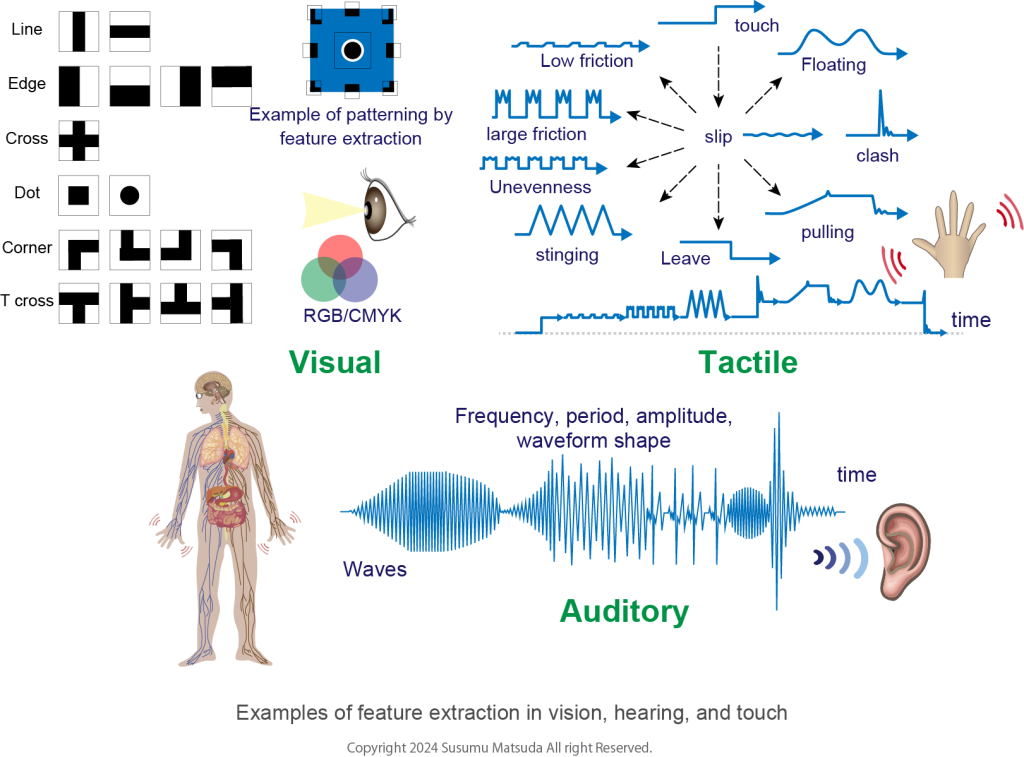Let’s think about how people capture and remember the features of events they experience through their sensory organs. Vision analyzes the image captured by the retina of the eye based on image features, and extracts the contours while judging points, lines, intersections, etc. Based on that information, we recognize objects and at the same time determine where the object is located in space. What is noteworthy here is that people extract features from a large amount of information and judge the situation by comparing it with the data in the brain. It is thought that in this process, information is reduced and only the necessary information is retained and stored as primary memory. Similarly, hearing, touch, smell, and taste are thought to extract multiple features for each sense that captures them and grasp the situation.

It is thought that people use the information captured by the five senses in a complex manner to instantly judge the situation they are in and the events occurring in front of them. They judge the importance of the situation and events obtained through the sensory organs and store them in primary memory. It is thought that a mechanism is at work in which the brain and body automatically judge the importance of the experience stored in primary memory and store it as a long-term memory or erase it without leaving any memory. In any case, the important thing is that we extract the necessary information from the vast amount of information captured by our sensory organs and store it in a compressed form. It is also important to understand how each of our sensory organs extracts features when considering the mechanism of memory.